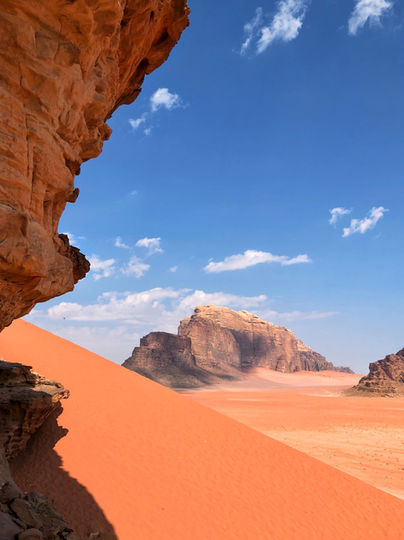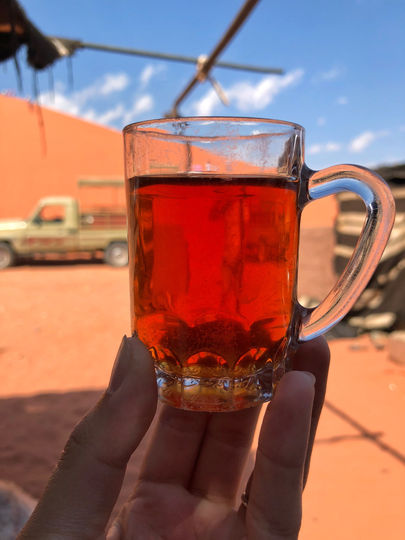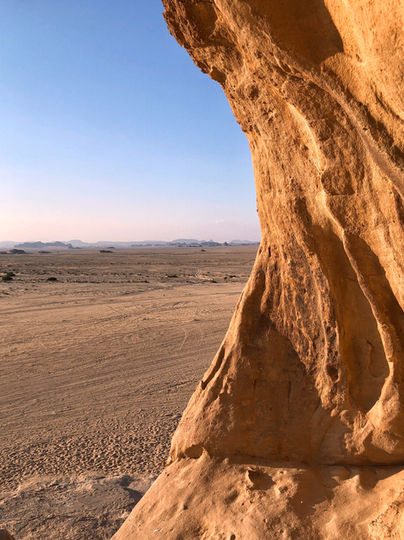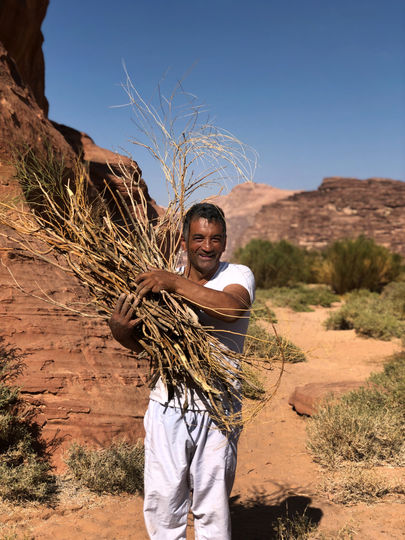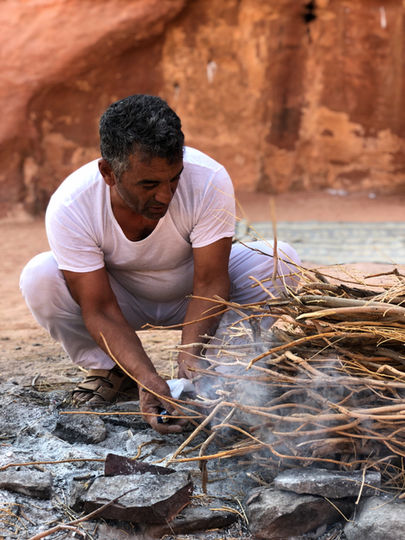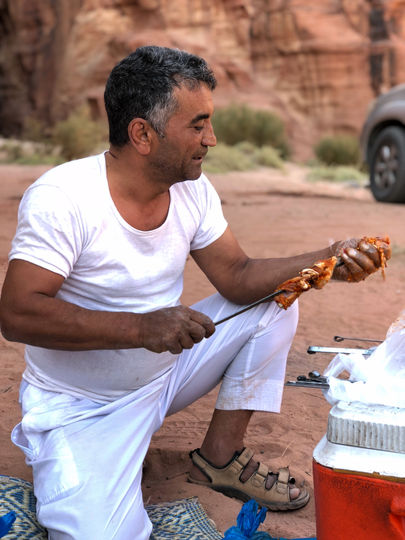wadi rum
One late-October morning, I left the heat of Aqaba for the Jordanian Mountains in a 4x4 Toyota. My mother, grandmother and I were traveling through Israel, and had added Petra to the itinerary. Our guide through parts of Israel, an Israeli archaeologist, had insisted that we spend three days in Jordan, and that we take a jeep tour of Wadi Rum, a desert made world-famous in the film Lawrence of Arabia. Wadi, arabic for dry riverbed, is both name and descriptor, as you can observe the passage of water over millennia to create the region’s signature granite and sandstone cliffs marked by holes and arches, mimicking the shape of coral. Though imagining water here in the dry autumn heat is nearly impossible, the winter brings rain and flash floods.
The beauty of this region is enough to make it one of the most interesting places on the planet, but the culture is what makes it spectacular. Hiking into Khaz’ali Siq, a canyon created by waterfalls, petroglyphs made by the inhabitants thousands of years ago are revealed: two ostriches, inscriptions, and other symbols of ancient desert life, some dating back to the 8th century BCE. The sense of being thrown back in history is unparalleled.
Today, Wadi Rum, like many Bedouin regions, is a mix of tradition and modernity. Tourism is the primary industry: there are camps of tents providing a Bedouin experience, guided camel tours, and stations for having desert tea and buying souvenirs.
Our Bedouin guide provided an unforgettable day. We traversed the desert, stopping to explore sandstone dunes, canyons and arches, while he regaled us with stories about his family. Yet the best part was when Mohammed took us to his “restaurant”: a fire pit at the mouth of a rusty sandstone canyon in the middle of the desert, surrounded by broom and wild caper plants. He prepared skewers of chicken he had killed and marinated that morning, and salads full of ingredients from his farm. While coaxing a fire into existence, he hummed Bedouin tunes, then chopped vegetables faster than many professional chefs. Tongue out, he turned the skewers over the embers, urging them to cook faster, then checked their doneness by squeezing a piece of pita bread around the pieces of turmeric-dyed golden chicken. The meal was one of the best I’ve had: a bounty of chicken, hummus with cardamom, Bedouin salad, babaganoush, grilled tomatoes and onions rendered sweet from their time in the coals. With mounds of pita and our hands, we devoured the meal to the sound of Bedouin radio echoing through the silence of the desert.
After the meal, we piled back into the car and sped across powder-like sand towards Petra. To say that reaching the asphalt highway was a disappointment would be an understatement. Still, watching the sun set over the distant granite mountains while driving along an ancient Roman road heading to the tombs of Petra made saying goodbye to Wadi Rum a tad bit easier.

